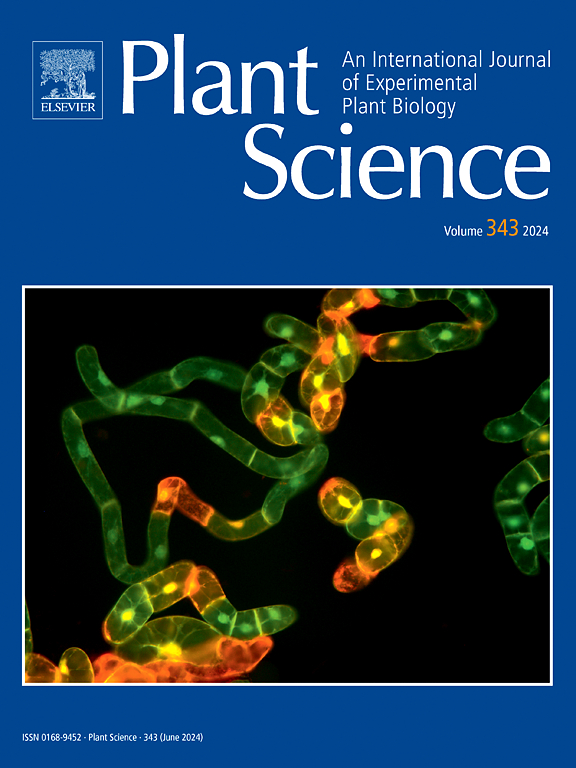Functional characterization of chlorophyll b reductase NON-YELLOW COLORING 1 in Medicago truncatula
IF 4.2
2区 生物学
Q2 BIOCHEMISTRY & MOLECULAR BIOLOGY
引用次数: 0
Abstract
Chlorophyll degradation is a characteristic process of leaf senescence. Two mutant lines, which showed green leaves and seeds during senescence, were identified by screening a Tnt-1 retrotransposon-tagged population of Medicago truncatula. Genetic and molecular analyses indicated that the mutated gene is NON-YELLOW COLORING 1 (MtNYC1) in M. truncatula. MtNYC1 encoded a chlorophyll b reductase, characterized by three transmembrane domains and a catalytic site (Y***K). Our investigation further identified three splicing variants of MtNYC1, encoding a full-length protein (MtNYC1A) and two truncated proteins (MtNYC1B, MtNYC1C). Genetic evidence indicated that the catalytic site and the third transmembrane domain were critical domains for chlorophyll b reductase. The coordinated action of three splicing variants plays a pivotal role in the degradation of chlorophyll during the senescence of leaves. This discovery provides precise target sites for the development of stay-green legume cultivars.
绿藻叶绿素 b 还原酶 NON-YELLOW COLORING 1 的功能特征。
叶绿素降解是叶片衰老的一个特征过程。通过筛选Tnt-1逆转录质子标记的Medicago truncatula群体,发现了两个在衰老期叶片和种子呈绿色的突变株系。遗传和分子分析表明,突变基因是Medicago truncatula中的NON-YELLOW COLORING 1(MtNYC1)。MtNYC1编码叶绿素b还原酶,具有三个跨膜结构域和一个催化位点(Y***K)。我们的研究进一步发现了 MtNYC1 的三种剪接变体,分别编码一个全长蛋白(MtNYC1A)和两个截短蛋白(MtNYC1B、MtNYC1C)。遗传学证据表明,催化位点和第三个跨膜结构域是叶绿素 b 还原酶的关键结构域。三种剪接变体的协调作用在叶片衰老过程中的叶绿素降解过程中发挥了关键作用。这一发现为开发留绿豆科植物品种提供了精确的目标位点。
本文章由计算机程序翻译,如有差异,请以英文原文为准。
求助全文
约1分钟内获得全文
求助全文
来源期刊

Plant Science
生物-生化与分子生物学
CiteScore
9.10
自引率
1.90%
发文量
322
审稿时长
33 days
期刊介绍:
Plant Science will publish in the minimum of time, research manuscripts as well as commissioned reviews and commentaries recommended by its referees in all areas of experimental plant biology with emphasis in the broad areas of genomics, proteomics, biochemistry (including enzymology), physiology, cell biology, development, genetics, functional plant breeding, systems biology and the interaction of plants with the environment.
Manuscripts for full consideration should be written concisely and essentially as a final report. The main criterion for publication is that the manuscript must contain original and significant insights that lead to a better understanding of fundamental plant biology. Papers centering on plant cell culture should be of interest to a wide audience and methods employed result in a substantial improvement over existing established techniques and approaches. Methods papers are welcome only when the technique(s) described is novel or provides a major advancement of established protocols.
 求助内容:
求助内容: 应助结果提醒方式:
应助结果提醒方式:


